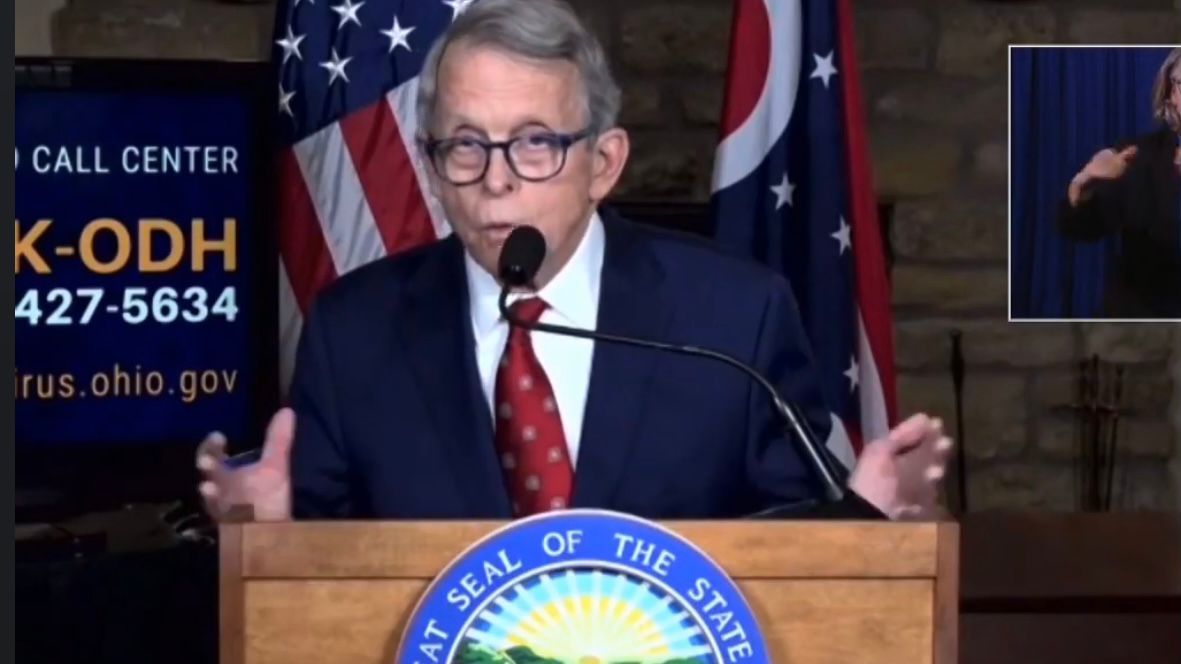COLUMBUS, Ohio — On New Year's Eve, an Ohio nursing home discarded doses of the COVID-19 vaccine after unused amounts had expired, Gov. Mike DeWine shared Tuesday, expressing his frustration precious quantities were tossed out.
The governor said the nursing home received more shots than it had residents and staff willing to be vaccinated. When the problem was discovered, the facility and the pharmacy team did what they could to get the vaccine out, but they were unable to use it all.
“They had had some left over, a lot left over. Then they were able to scramble and get those into people's arms, but there were some that were wasted. Now it's the first time that that's occurred to our knowledge in Ohio,” DeWine said. “Not happy about it.”
The news comes as Ohio reports disappointing progress in the state's vaccine rollout. As of Jan. 5, Ohio has administered 175,508 doses of the 331,000 doses received, far short of previous expectations to receive 529,000 doses by Jan. 1, a figure that was given in late December. Weeks earlier, Ohio's projection was to receive more than 660,000 doses by Jan. 1.
The nursing home facility, located in Lawrence County, was conducting a week long clinic. But the nursing home determined it had 39 extra vials, or 195 doses. The pharmacy reallocated doses due to the incident.
“They reallocated 13 vials and they used 19 of the remaining vials on other residents older than 65, as well as members of the pharmacy team,” said Dan Tierney, the governor’s spokesperson. “Unfortunately, that left seven vials of 35 doses that were not used."
According to Walgreens, the pharmacy partner that was administering doses at the facility, the incident was a result of the nursing home requesting too many doses.
"The number of vaccine doses requested by a long-term care facility far exceeded their actual need," spokesperson Phil Caruso said.
Caruso said Walgreens followed emergency procedures and gave some of the extra doses to other nearby long-term care facilities. Walgreens also immunized its own staff with extra doses.
"We have taken steps to ensure every dose of the vaccine is used to protect patients and communities by updating our procedures to reconfirm the number of vaccine recipients with facilities before beginning the thawing process," Caruso said. "We continue to work closely with long-term care facilities to ensure that their dosage requests don’t overestimate their actual need, as well as with state and federal health agencies in our ongoing efforts to vaccinate residents in long-term care facilities."
Ohio has administered 53% of its doses, DeWine said, a number that is artificially low due to incomplete reporting from hospitals.
DeWine revealed Tuesday the hold-up is partially due to requirements for nursing home doses to be “banked,” meaning the second shot is held back. In December, the governor was not expecting to have to hold any doses back. The doses are reserved due to requirements from a federal pharmacy program.
That “bank” should fill in the coming days, allowing the state to move more quickly with vaccine deployment.
“Once that bank is filled, which it pretty much is, then you're going to see our [numbers] will go up more,” the governor said.
If that wasn't enough bad news on vaccines, for the first time Tuesday, DeWine shared January allocation projections, and they are grim. He said his team gave him the rough guess that there will be 100,000 doses of Pfizer and Moderna combined this week, bringing fear the month of January will not see the scale up of the rollout that was once forecasted.
The state is still in phase 1A of vaccine distribution, which allows residents and staff of long-term care facilities and health care workers to get immunized.
“Unless that speeds up, we're going to be a long time going through 1A and then 1B. And I don't like it,” he said. “I'm anxious to move forward, but we play with the hand that we're dealt.”
The governor said the numbers are rough estimates, but the ballpark ranges for the next three weeks, 100-175,000, look to be disappointing, he said.
Eager to pick up the pace with vaccine administration, the governor recently spoke with President-Elect Joe Biden to discuss accelerating the process, he said.
DeWine said the state is given a number on Tuesdays of what the allocation will be for the next Monday. On Thursdays, the state divvies out the allocation to the different locations administering shots, including health departments and hospitals.
There are approximately 1 million residents in 1A and 2 million residents in 1B, he said, noting that many of those people will opt out of getting the vaccine. DeWine announced Tuesday Ohio could move to phase 1B in two weeks.
When Ohio begins phase 1B, the state will start with seniors 85 and older, about 220,000 people, then move to those 75 to 84, about 580,000 people, and then to the 65 to 74 age group, about a million people.
The state will begin immunizing school staff, about 300,000 people, and approximately 75,000 people with certain medical conditions at some point during the rollout to those age groups, though the precise prioritization has not been finalized.
The governor said an announcement would come soon, including information about where you can get the vaccine if you are in tier 1B, which will be a combination of primary care doctors and no-appointment needed sites at places like fairgrounds.
EDITOR’S NOTE: This story has been updated to include new information about the number of doses that were discarded. (January 5, 2021).
The story has been updated to include reaction from Walgreens. (January 6, 2021).



